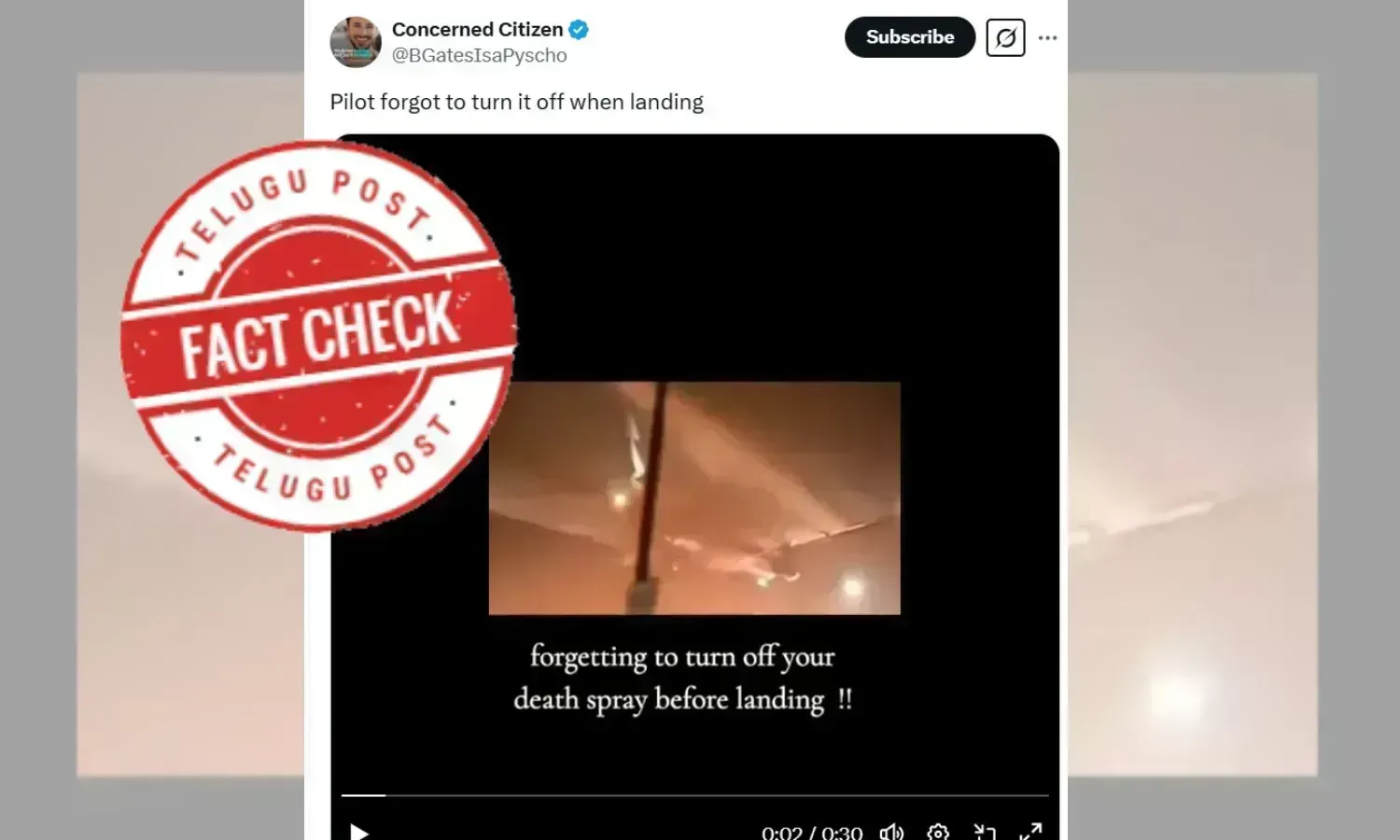Fact Check: Video showing air patterns shows wingtip vortices but not chemical spray patterns
Airplanes that burn fossil fuel to enable flight, emit not only CO2 but also several other gasses like nitrogen oxides,

Claim :
Viral video shows suspicious air patterns as the pilot forgot to turn off the chemical spraying before landing the airplaneFact :
Viral video shows wingtip vortices created while landing of the plane and not chemical spray patterns
Airplanes that burn fossil fuel to enable flight, emit not only CO2 but also several other gasses like nitrogen oxides, sulfur dioxide and water vapor trails, and particulate matter. According to most scientific studies, media, and governments, the white trails that can be seen behind aircraft in flight, corresponding to condensation mixed with engine particulate emissions, only persist under specific atmospheric conditions. They are called condensation trails, and they are called cirrus contrails, when they remain for hours to reach several kilometers wide. But many people think that these trails contain dangerous chemicals and the authorities are spraying the population with dangerous chemicals, called Chemtrails.
Recently, a video showing dense trails after an airplane lands at an airport was shared by an X user with the claim that the video shows the pilot forgetting to turn off the chemtrails or the death spray before landing. We can also see some swirling air patterns during the landing.
Here are the links to the Claim.
Here is the archive link of the claim.
Fact Check:
The claim is False. The viral video does not show the chemtrails spray done deliberately by the pilot.
When we searched about the exhaust air patterns during the flying of the airplane using the keywords, we found that the video shows the pattern named as wingtip vortices created by the airplane’s wings. These patterns are not always visible for all the planes but can be seen under specific humidity conditions. Wingtip vortices are swirling air patterns that form behind an aircraft's wing as it generates lift. As the wing moves through the air, a low-pressure area forms on the top surface and a high-pressure area forms on the bottom surface. The pressure difference causes the air to accelerate around the wingtip. The air rotates inwards behind the wing, forming a vortex.
Even though wingtip vortices are present whenever the aircraft is airborne, the swirling air usually doesn’t leave any visible signs of its existence. But, on very humid days, you might be able to see the core of the vortex trailing back from the wingtip. The airflow inside the vortex core is spinning at a very high speed and has very low pressure. This reduces the temperature of the air inside. If the temperature drops below the local dew point temperature, the moisture in the air condenses rapidly, forming a small cloud right at the tip of the wing. But if you’re looking at an aircraft flying high at cruising altitude, the contrails that you see are from the engines, not the vortices. The best chances of seeing contrails from wingtip vortices are when the aircraft is flying at low speeds and low altitudes on humid days. These vortices are present at other locations where there are discontinuities in airflow as well. They’re present and occasionally visible at the ends of the aircraft flaps when they are extended for takeoff or landing.
There are several factors that can affect the vortex strength. Those are aircraft speed, aircraft weight, angle of attack, wing configuration and proximity of the aircraft to the ground.
Here is a complete explanation of the science behind wingtip vortices.
Therefore, the trails seen in the viral video are not chemtrails but are just wingtip vortices containing moist air. The claim that the pilot forgot to switch off the spraying of the chemicals while landing is False. These are natural air patterns seen due to heavy humidity in the weather.

